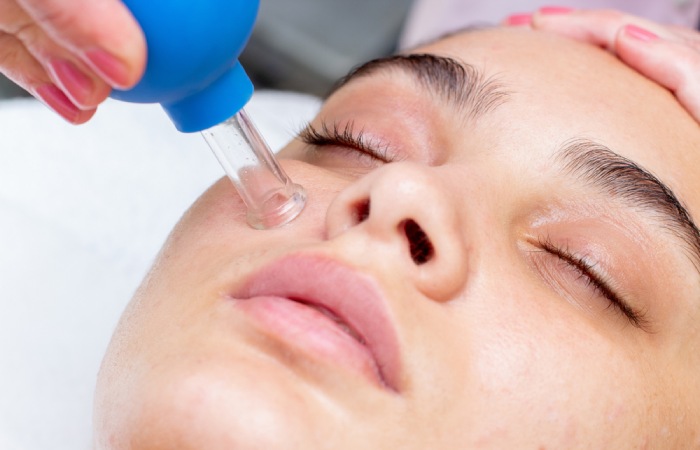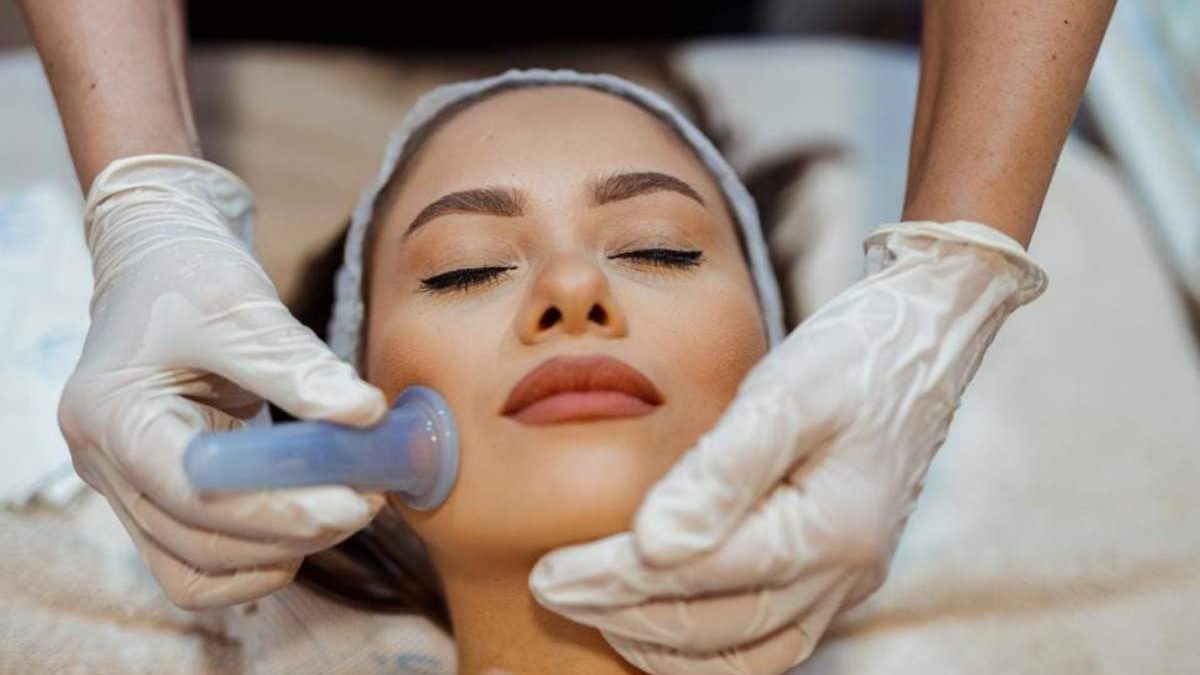Table of Contents
Introduction
Facial cupping is all about increasing blood circulation and stimulating facial cells responsible for collagen production. IT, in turn, can brighten your skin, minimize the appearance of scars, fine lines, and wrinkles, reduce swelling and tighten your chin, chin, and neck.
How it Works Facial Cupping?

Pekar first cleaned my face to determine my skin type. After deciding that I had somewhat sensitive skin with hyperpigmentation and hormonal acne, she infused it with a few products to detoxify and cleanse my skin, the main ingredient being CBD oil which soothed my skin and my jaw pain. Before the cupping took place, Pekar gave me a magnetic mask that made me feel a bit like a character from Silence of the Lambs. She was shaking my face, and I couldn’t open my eyes or move my muscles as she cast her magic.
After that, Pekar tested the cups’ size to ensure I wouldn’t have a terrible reaction. The face cupping took only 15 minutes and was unlike anything you would expect. It’s completely painless, and I feel like someone is brushing my face with a bit of a sucking sound.
What is the Difference Between a Regular Face and a Face Cup?
The use of cupping and face sucking are the most obvious differences, but the benefits can also differ. The magnetic cup technique aims to increase local chi and blood circulation and draw nutrients to the face surface.
And What is the Difference Between Back Facial Cupping and Face Cupping?
Because cupping is not static, movement creates stimulation, moves blood around the face, and drains toxins through your lymphatic system. During body cupping, the cups are applied to a specific area for a few minutes, creating a bruising effect. The darker the bruise, the more inflamed/stagnant that area. It helps the technician see which part of the body needs work.
So no Bruises?
No! It is a common misconception about face cupping. While it may bruise other parts of your body, it shouldn’t (and shouldn’t!) leave harsh purple marks on your face. Minor side effects may occur after treatment, and in rare cases, people rarely report dizziness, nausea, and some facial discomfort.
How Should I Prepare for Face Cupping?
Avoid taking medications that thin the blood before treatment. If you’re pregnant, you shouldn’t have cupping either.
What is the Care after Face Cupping?
Be sure to drink enough water to flush out toxins, fats, and excess moisture. Avoid caffeine, alcohol, and salty foods. Pekar also recommends drinking two glasses of water for each meal for the next 24 hours.
Risks and Side Effects. Facial Cupping
Okay, we know facial cupping shouldn’t leave you covered with bruises. Still, some people can get bruises, especially on thinner areas of the face (for example, the forehead or around the eyes) or if you’re hypersensitive. Skin it. Wong warns that cupping can cause capillaries and broken blood vessels in some. Additionally, Yang says you’ll want to avoid facial cupping on open wounds, acne blemishes, and sunburned skin because dragging the suction tool can worsen the sores. “Face cupping is not recommended during pregnancy or for people who have blood clotting disorders or are taking blood thinners,” she adds. As always, consult an expert before trying any new skincare procedure, at home or otherwise.
Conclusion
Facial cupping How long do the signs last? If there is any surface discoloration, it is temporary, generally ranging in color from light pink to dark purple, and may last from a few hours to 10 days before gradually disappearing completely.

